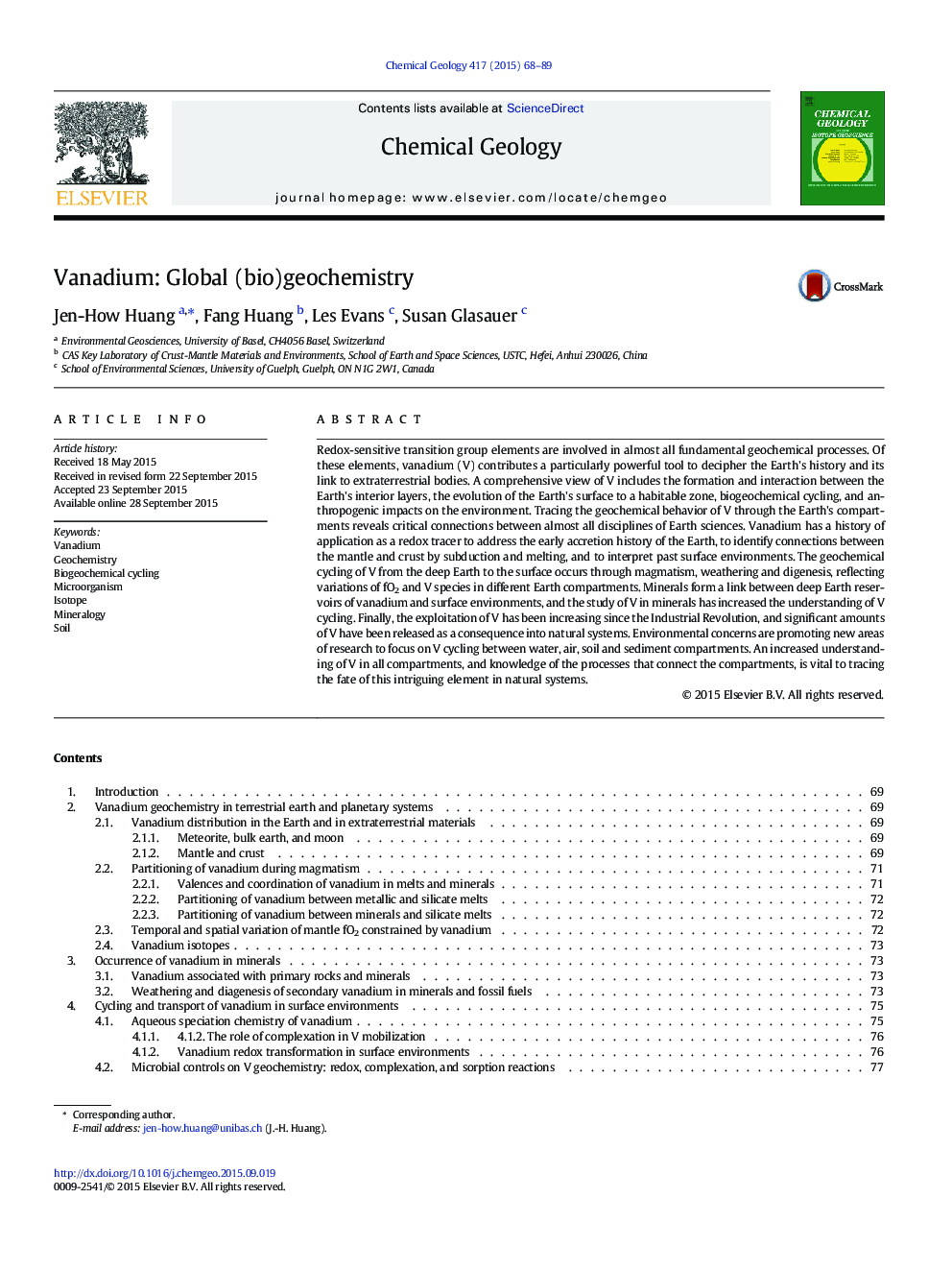| Article ID | Journal | Published Year | Pages | File Type |
|---|---|---|---|---|
| 6436235 | Chemical Geology | 2015 | 22 Pages |
Redox-sensitive transition group elements are involved in almost all fundamental geochemical processes. Of these elements, vanadium (V) contributes a particularly powerful tool to decipher the Earth's history and its link to extraterrestrial bodies. A comprehensive view of V includes the formation and interaction between the Earth's interior layers, the evolution of the Earth's surface to a habitable zone, biogeochemical cycling, and anthropogenic impacts on the environment. Tracing the geochemical behavior of V through the Earth's compartments reveals critical connections between almost all disciplines of Earth sciences. Vanadium has a history of application as a redox tracer to address the early accretion history of the Earth, to identify connections between the mantle and crust by subduction and melting, and to interpret past surface environments. The geochemical cycling of V from the deep Earth to the surface occurs through magmatism, weathering and digenesis, reflecting variations of fO2 and V species in different Earth compartments. Minerals form a link between deep Earth reservoirs of vanadium and surface environments, and the study of V in minerals has increased the understanding of V cycling. Finally, the exploitation of V has been increasing since the Industrial Revolution, and significant amounts of V have been released as a consequence into natural systems. Environmental concerns are promoting new areas of research to focus on V cycling between water, air, soil and sediment compartments. An increased understanding of V in all compartments, and knowledge of the processes that connect the compartments, is vital to tracing the fate of this intriguing element in natural systems.
